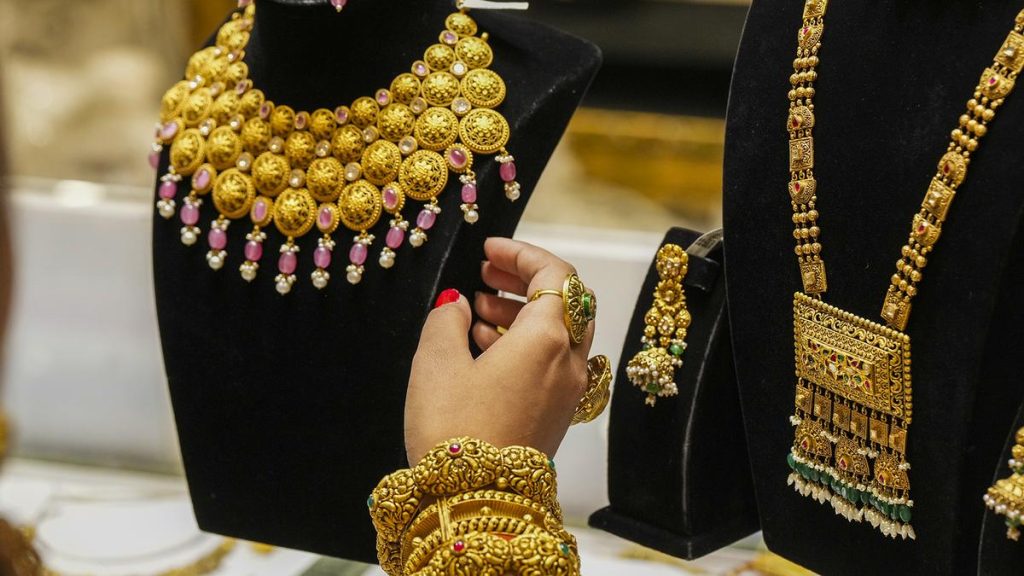India’s Gem & Jewellery exports to the United States (U.S.) could halve from what they are today unless it enters into a bilateral trade agreement (BTA) with the U.S. that has imposed steep reciprocal tariffs, industry officials said citing historical data, underscoring this risk.
In 2007 when the U.S. withdrew India’s Generalized System of Preferences (GSP) benefits, gold jewellery exports plummeted 50% from $2.21 billion to $1.01 billion within a year, recovering only after 15 years, according to a note reviewed by The Hindu.
In a note on the likely impact, Adil Kotwal, President, SEEPZ Gems & Jewellery Manufacturers’ Association (SGJMA) stated, “The U.S.’s proposed reciprocal tariff policy poses a serious threat to SEEPZ’s jewellery export sector, which accounts for 85% of India’s diamond-studded jewellery exports to the US.”
“This industry is highly labour-intensive, directly employing 50,000 workers and supporting over 1 lakh more. A sudden tariff hike could severely impact exports, putting thousands of livelihoods at risk,” he cautioned.
“We urge the Indian government to negotiate for a fair duty structure or consider lowering India’s import duty on U.S. jewellery to a more reciprocal level,” he stated.
India’s exports to the U.S. include a diverse range of products. These include cut and polished diamonds ($5.6 billion), studded gold jewellery ($2.55 billion), plain gold jewellery ($267 million), lab-grown diamonds ($831 million), silver jewellery ($320 million).
However, gold jewellery and diamonds—key drivers of India’s exports—stand to suffer the most, according to Mr. Kotwal.
India’s tariffs on U.S. gold jewellery (20%) far exceed the U.S.’s rates of 5.5-7% on Indian gold jewellery. Similarly, India levies 5% on cut and polished diamonds, while the U.S. applies none.
“Under the reciprocal plan, the U.S. could raise tariffs on these Indian goods, potentially lowering exports,” he pointed out.
The Gem & Jewellery Export Promotion Council (GJEPC) in a statement said that the Trump administration’s announcement of a 26% [27%] reciprocal tariff on Indian gem and jewellery exports to the US would be a significant burden on Indian exporters and American consumers alike.
“While the tariff’s application to competing nations presents both challenges and opportunities, it is likely to significantly impact India’s diamond and jewellery sector—a cornerstone of its exports to the U.S. In the long term, we foresee a reshaping global supply chains,” it said.
“In short run, we anticipate challenges in sustaining India’s current export volume of USD 10 billion to the US market,” it added.
“We urge the Government of India to progress the Bilateral Trade Agreement between India and the US, as it would be crucial in navigating the tariff issues and securing long term interest of the sector,” it stressed.
GJEPC said it was actively engaging with stakeholders to address these risks and advocate for balanced solutions that ensure continued access to the US market.
India and the US share a historically strong trade relationship in the gem and jewellery sector. In FY24, India exported $32.85 billion-worth of gems and jewellery globally, with the U.S. consuming 30.28% ($9.95 billion).
Meanwhile, in the Calendar Year 2024, India supplied 12.99% ($11.58 billion) of America’s total $89.12 billion gem and jewellery imports, as per US International Trade Commission (USITC) data.
However, the U.S. runs a trade deficit of $6.27 billion with India in this sector, a gap the Trump administration seeks to narrow.
The U.S. government is keen on matching India’s higher duties (average tariffs of 8.63%) against the U.S.’s current paltry rates (average tariffs of 3.17%).
According to Kirit Bhansali, Chairman, GJEPC, the tariff policy could necessitate adjustments to maintain India’s dominance in the US market, where it holds substantial shares in cut and polished diamonds (45.09%), gold jewellery (24.61%), and worked lab-grown stones (92.17%).
“The Indian gem and jewellery industry calls for mutually agreeable tariff negotiations, to prevent India from losing market share to competitors and facing economic disruption. With the reciprocal plan’s implementation looming, stakeholders are urged to act swiftly to safeguard this vital industry,” he observed in a note.
According to an official of Gemological Institute of America (GIA) reciprocal tariffs by India if any could prompt the U.S. to shift sourcing to countries like France, Italy, Switzerland, Jordan, and South Korea, where tariffs are lower or zero under Free Trade Agreements (FTAs).
Jordan enjoys duty-free access to the U.S., while France and Italy impose just 2.5% on U.S. jewellery—far below India’s 20%. Indian manufacturers might also relocate to Oman, Singapore, or the UAE to leverage lower tariffs or FTAs with the US.
Arvind Gupta, President, Sitapura Gems and Jewellery Industry Association (SGJIA) in a note said both silver and gold jewellery export production would be impacted as India was already facing severe challenges in this area.
“If these US tariffs are implemented, the direct benefit will shift to countries like Thailand and Vietnam. Right now, India has a low volume of finished jewellery imports from America. So if we negotiate strongly with the US, we will be in a win-win situation,” he stated.
“India must acknowledge this issue and take the right approach,” he recommended.
Published – April 03, 2025 09:26 pm IST

